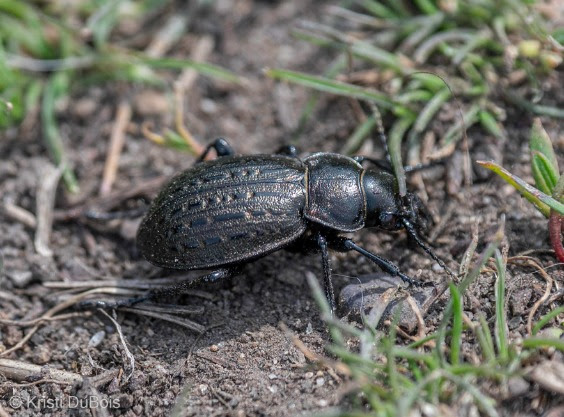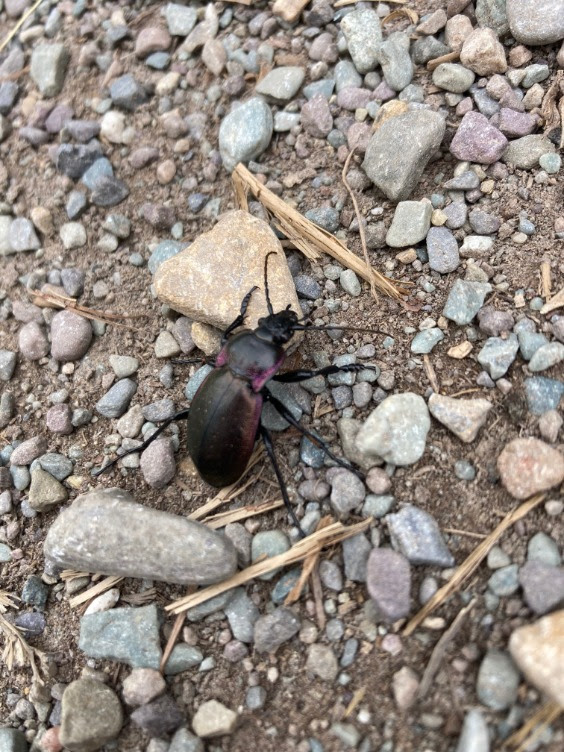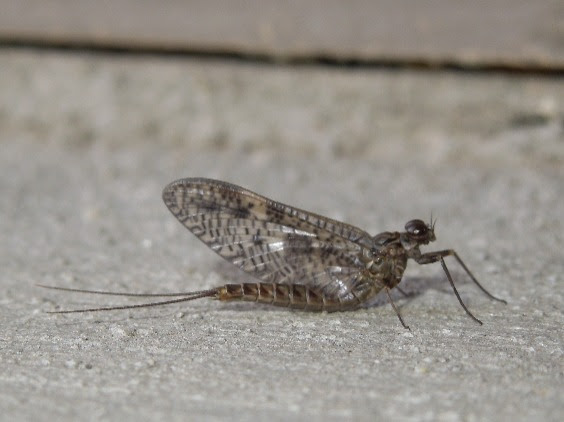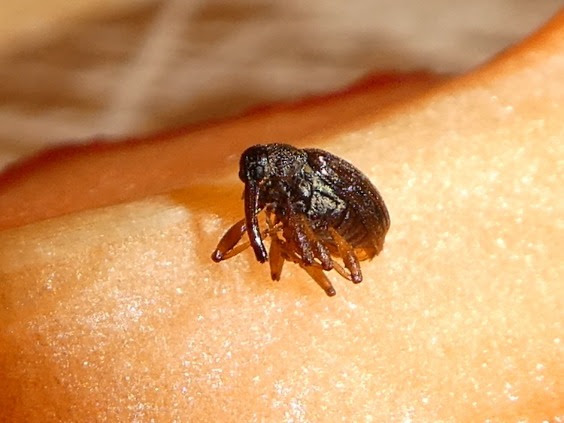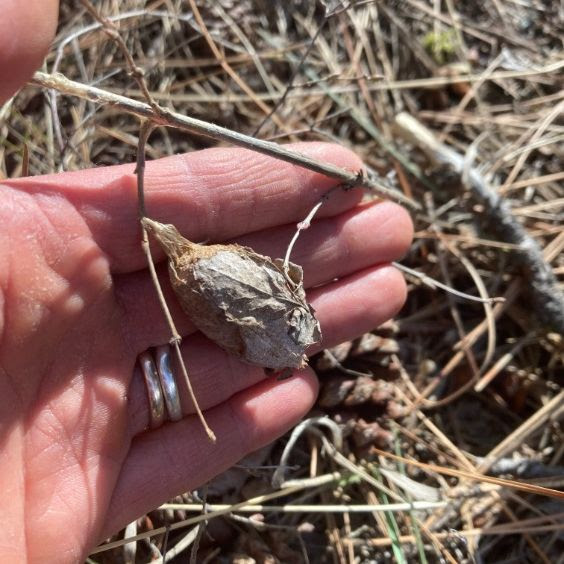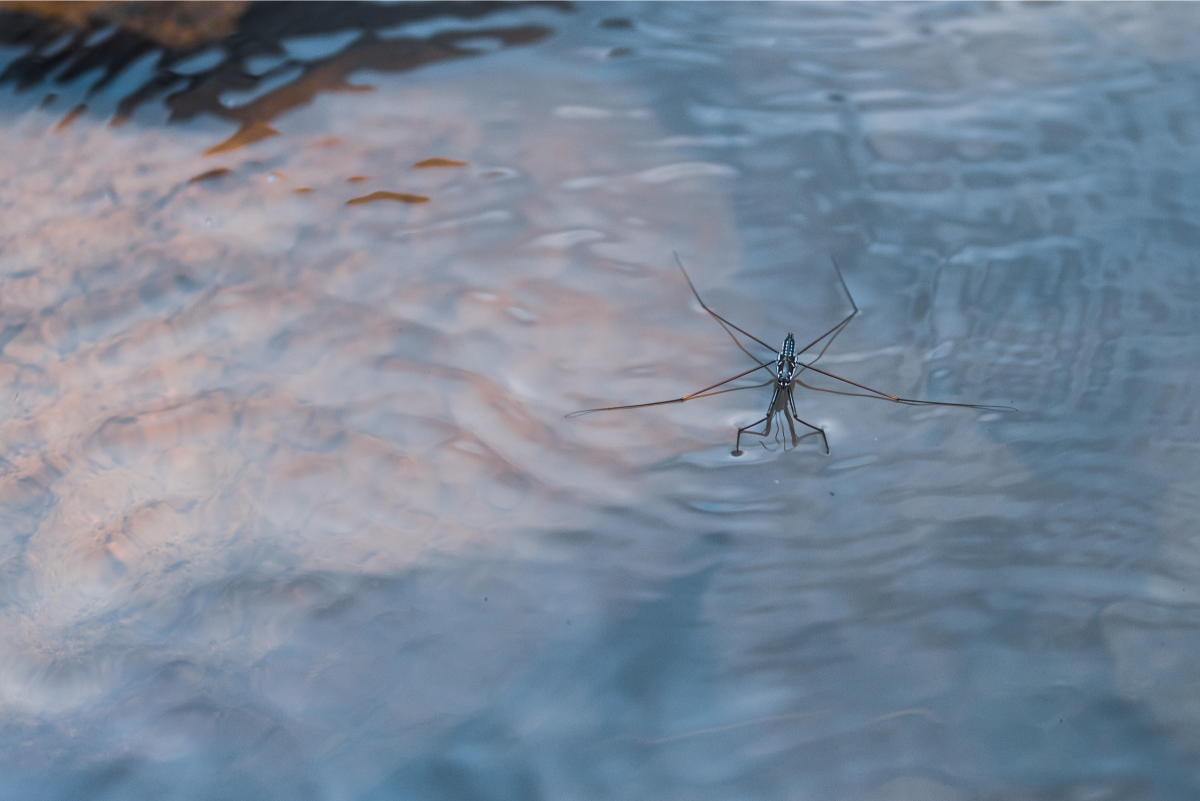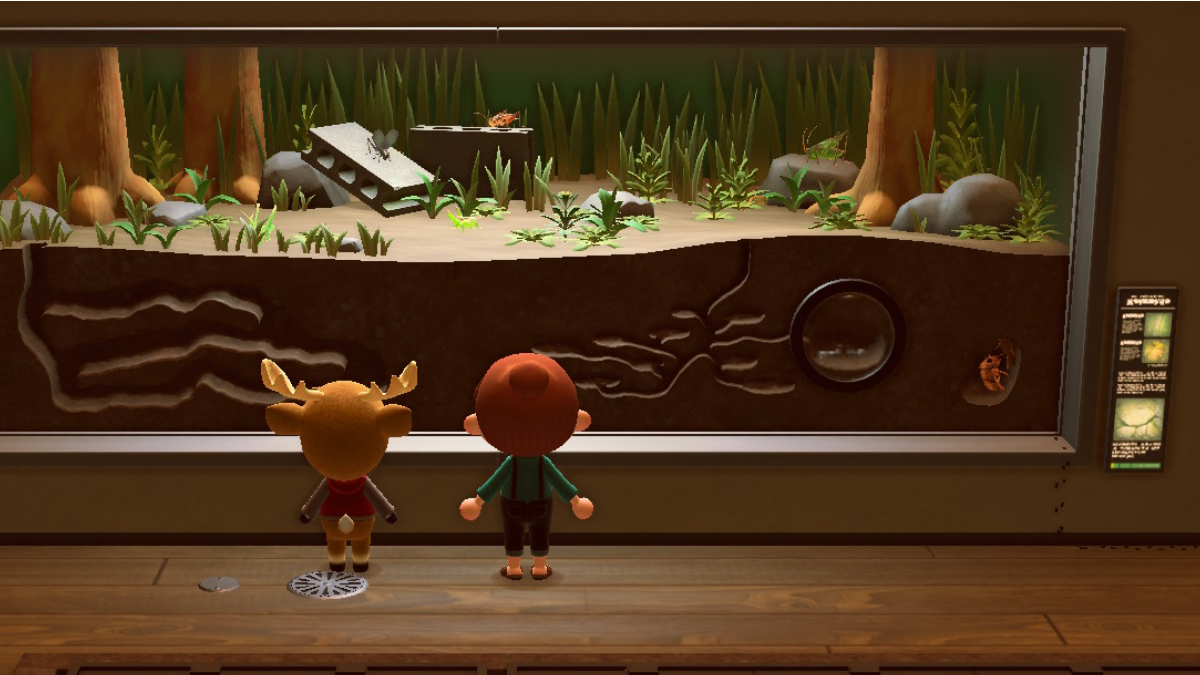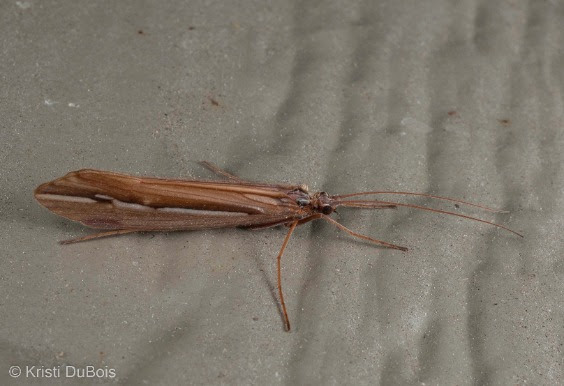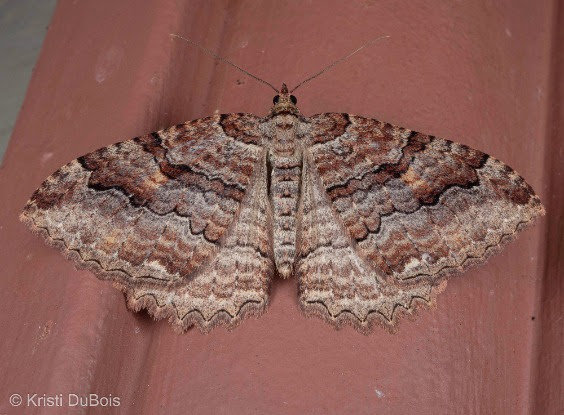Ground beetles in the genus Calosoma “are known as ‘searchers’ for their feverish hunting behavior” (Kaufman Field Guide to Insects of North America). And as their name suggests, they’re after caterpillars—often climbing […]
Read MoreArticles by Misty Nelson
European Ground Beetle or Bronze Ground Beetle (Carabus nemoralis)
These European transplants, introduced roughly 150 years ago, are now widespread in their North American range. Flightless and nocturnal, they prowl gardens, yards and open, wooded areas, for soft-bodied invertebrates. […]
Read MoreMayflies (order Ephemeroptera)
Kelly shared several photos of some mayfly beauties she found on her porch. Although these two look markedly different, we believe them to be the same species. The top mayfly, […]
Read MorePepper Weevil (Anthonomus eugenii)
This little fella is Pepe III, the third Pepper Weevil to make it to Jen and Glenn’s house via a green pepper purchased at the grocery store. They found their first in […]
Read MorePolyphemus Moth Cocoon (Antheraea polyphemus)
Helena noticed a cocoon hanging from a branch alongside Rattlesnake Creek. She carefully collected it and brought it home for observation. Shortly after, she reached out to us for recommendations to help […]
Read MoreEurasian Millipede (Ophyiulus pilosos)
Millipedes and centipedes both have a lot of legs, but they have some key differences. Millipedes are slow-moving, have two pairs of legs on most segments, and are harmless decomposers. […]
Read MoreNotes from the Lab: Water Striders
Welcome back to the Lab! Striders, skeeters, skippers, water bugs, pond skaters, or Jesus bugs; these predacious, aquatic insects go many common names and are some of the first insects to show up when […]
Read MoreNotes from the Lab: Arthropod Crossing
Welcome back to the Lab! Early spring in Montana can be a major gamble when it comes to weather. If you’re like me, you put all your eggs into your spring […]
Read MoreWinter Caddisfly (genus Psychoglypha)
At first glance, caddisflies look much like their closest living relatives—the moths and butterflies. How to tell the two groups (orders) apart? Zoom in on their wings and mouthparts. Moth […]
Read MoreTissue Moth (Triphosa haesitata)
Tissue moths overwinter in caves where the temperature stays just above freezing, emerging in early spring. (We suspect that they wait out winter in other protected, temperature-stable locations, too.) A […]
Read More